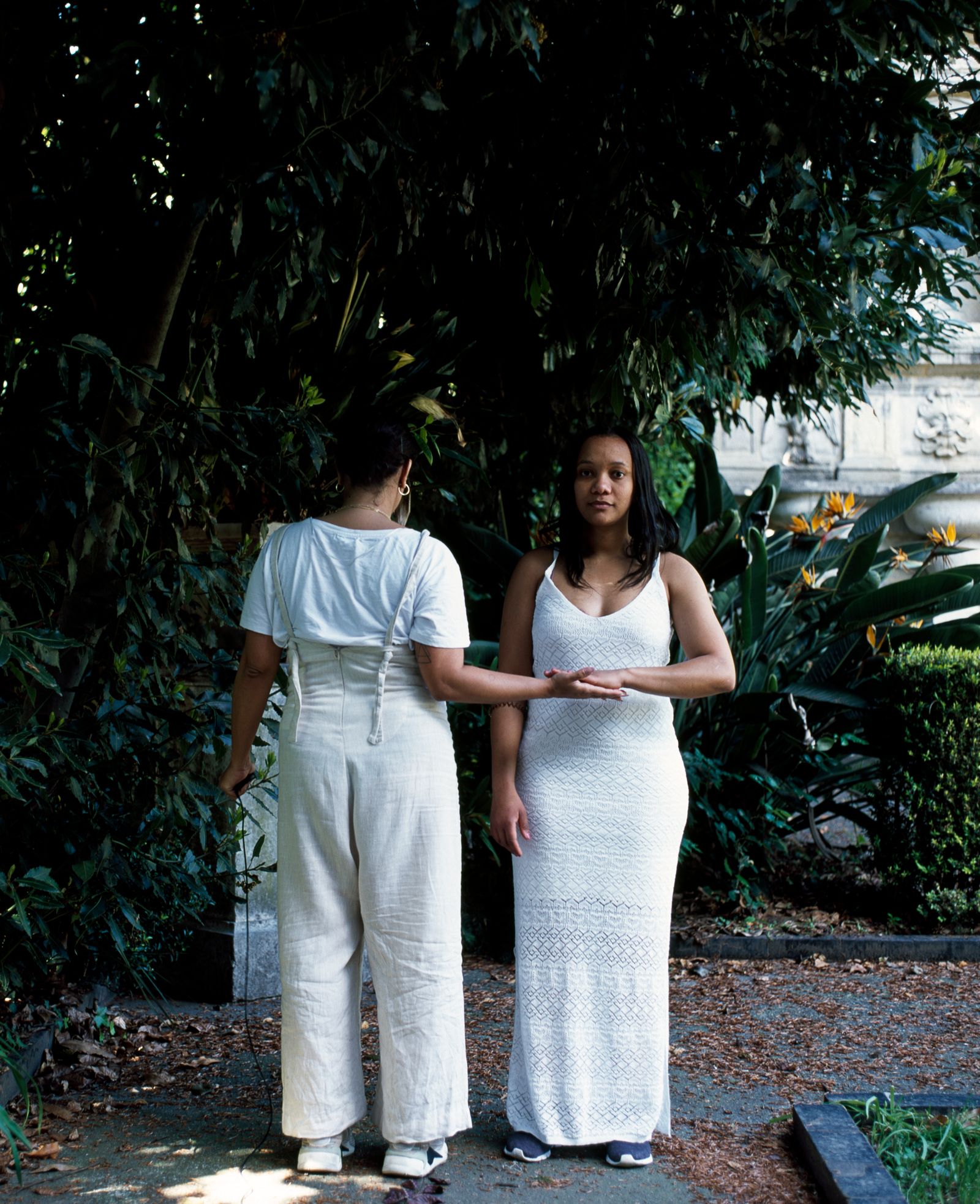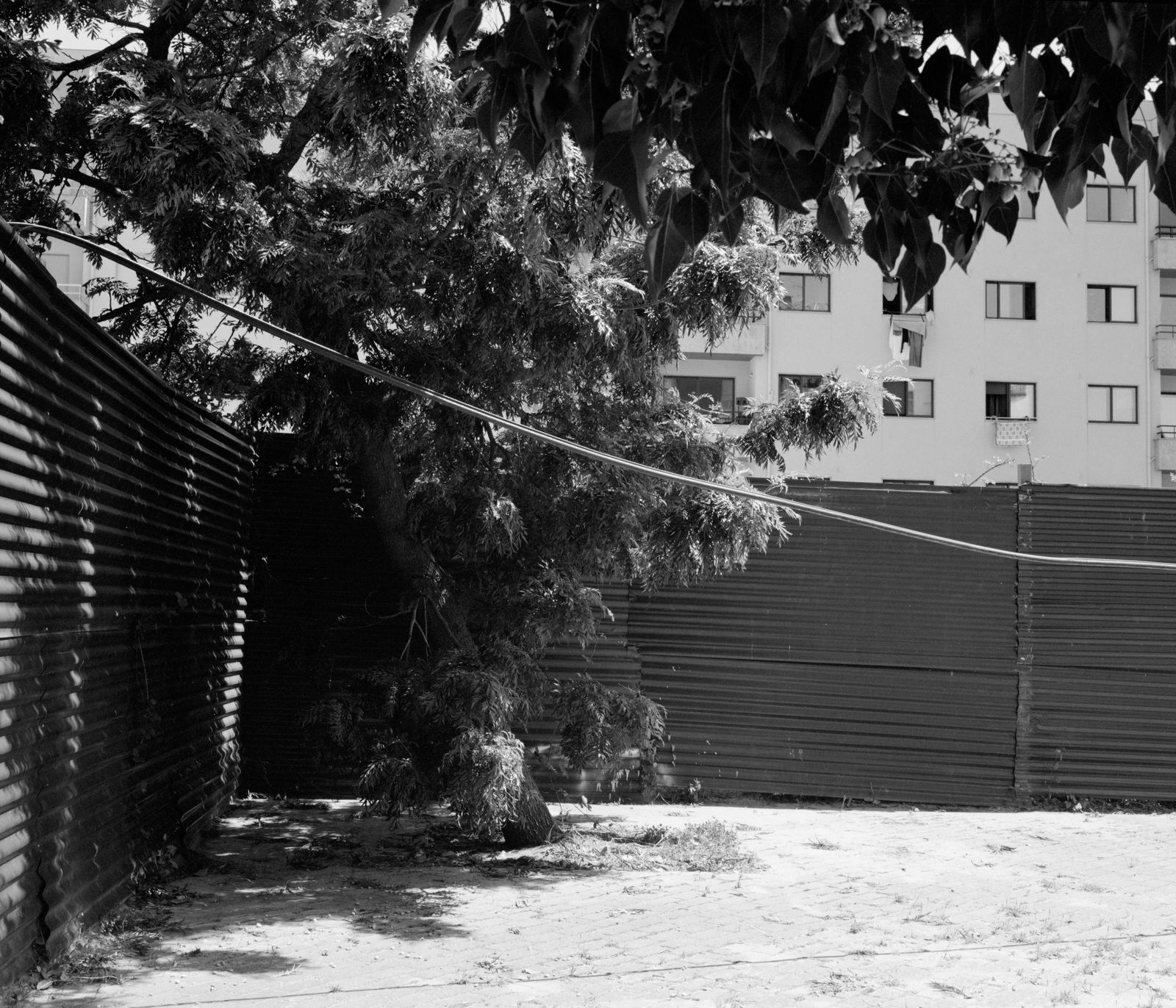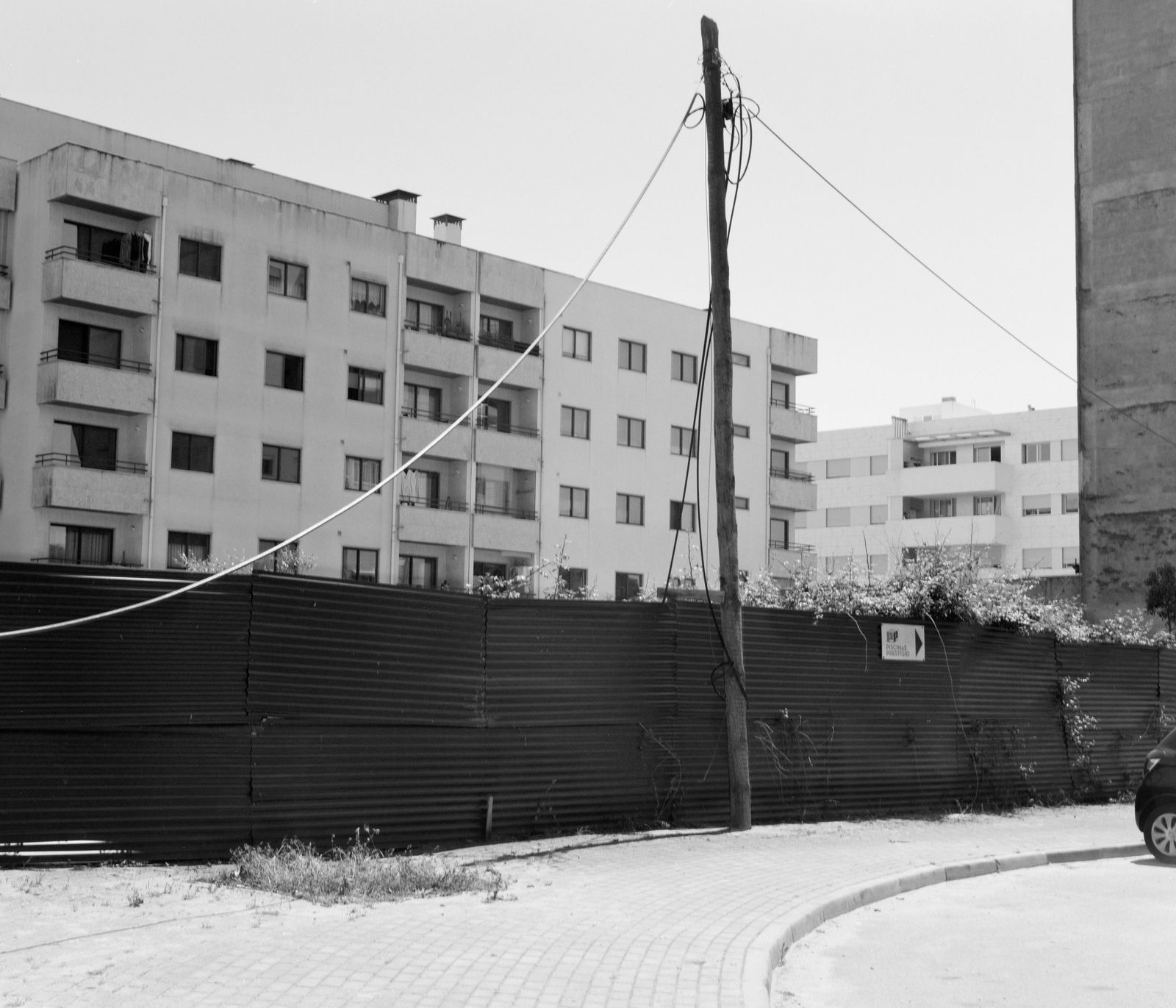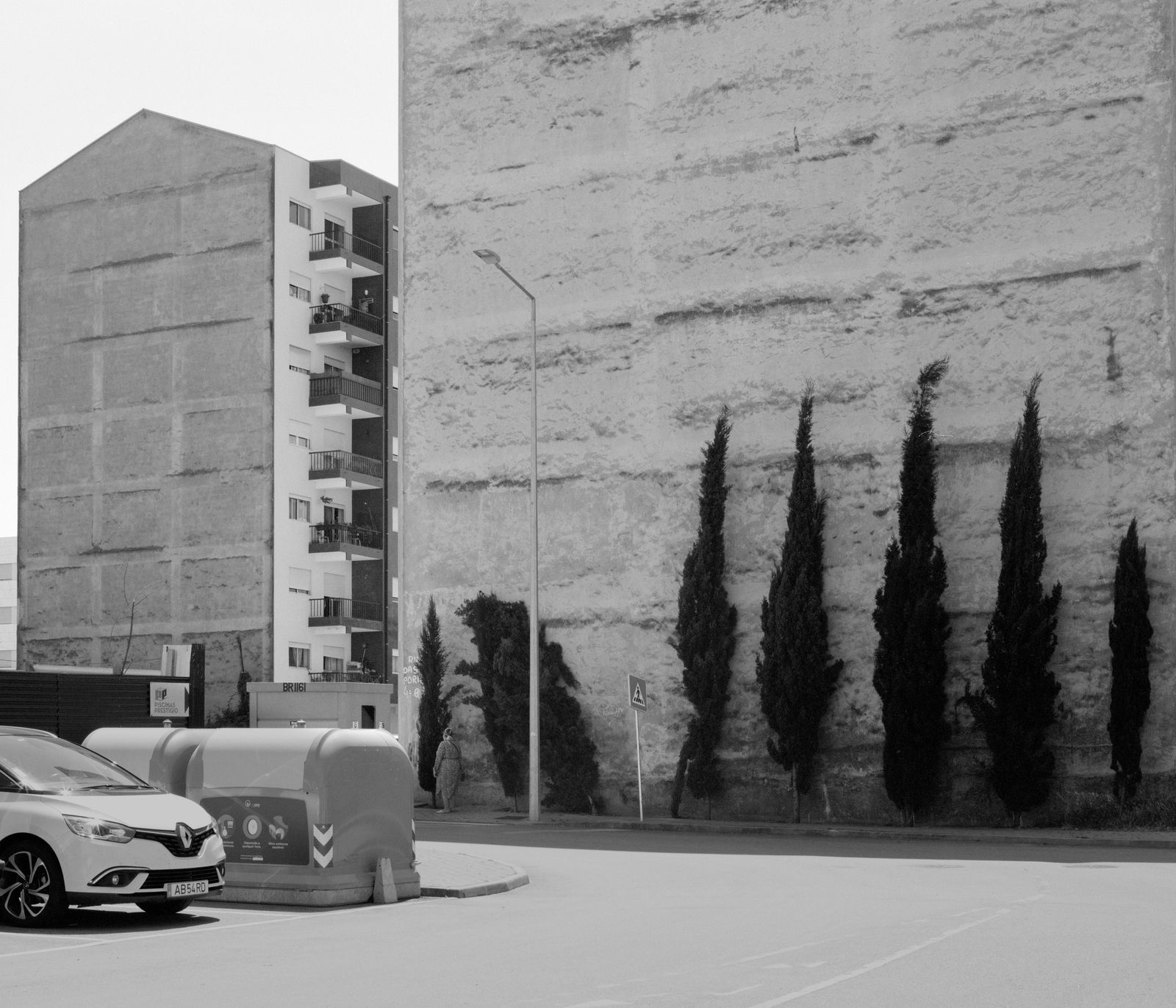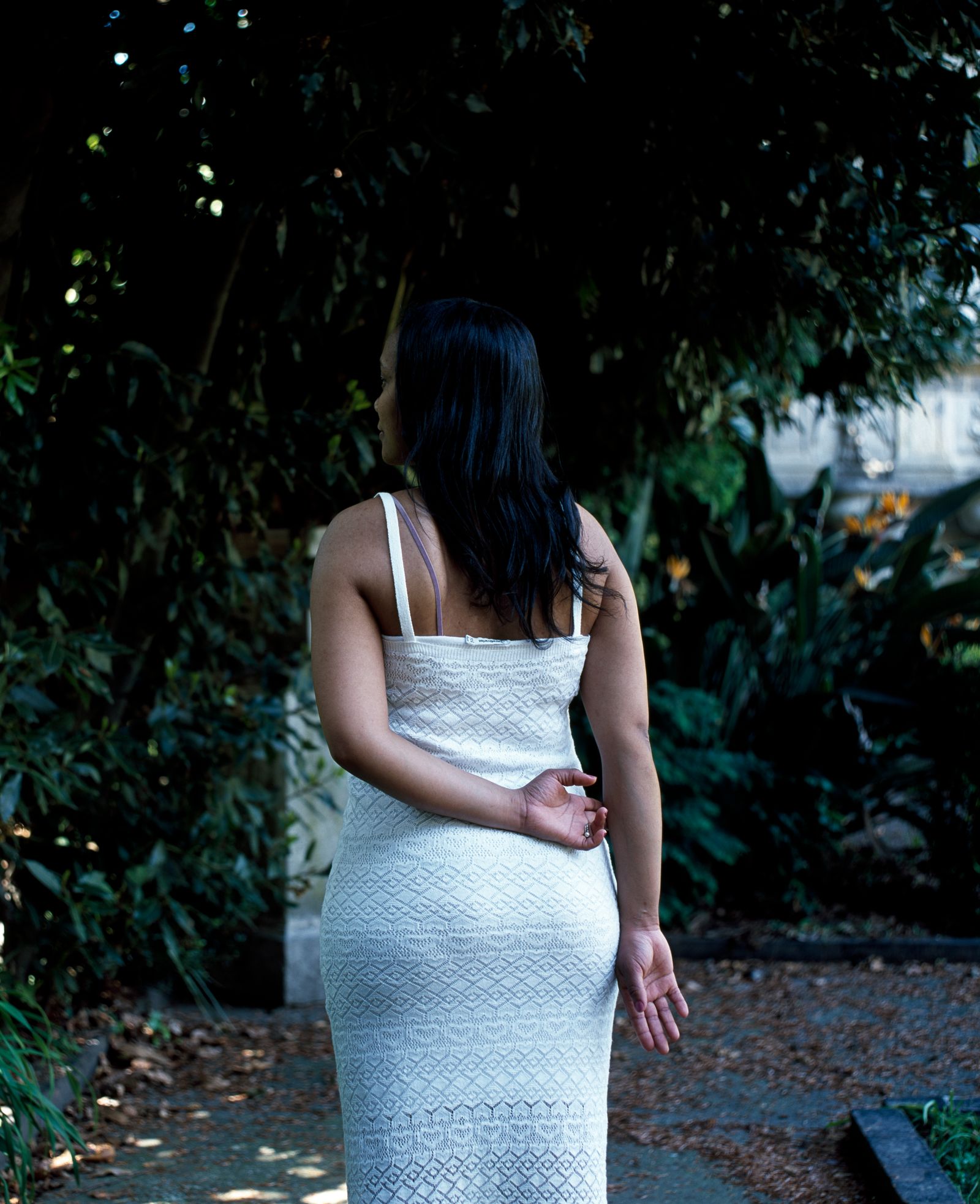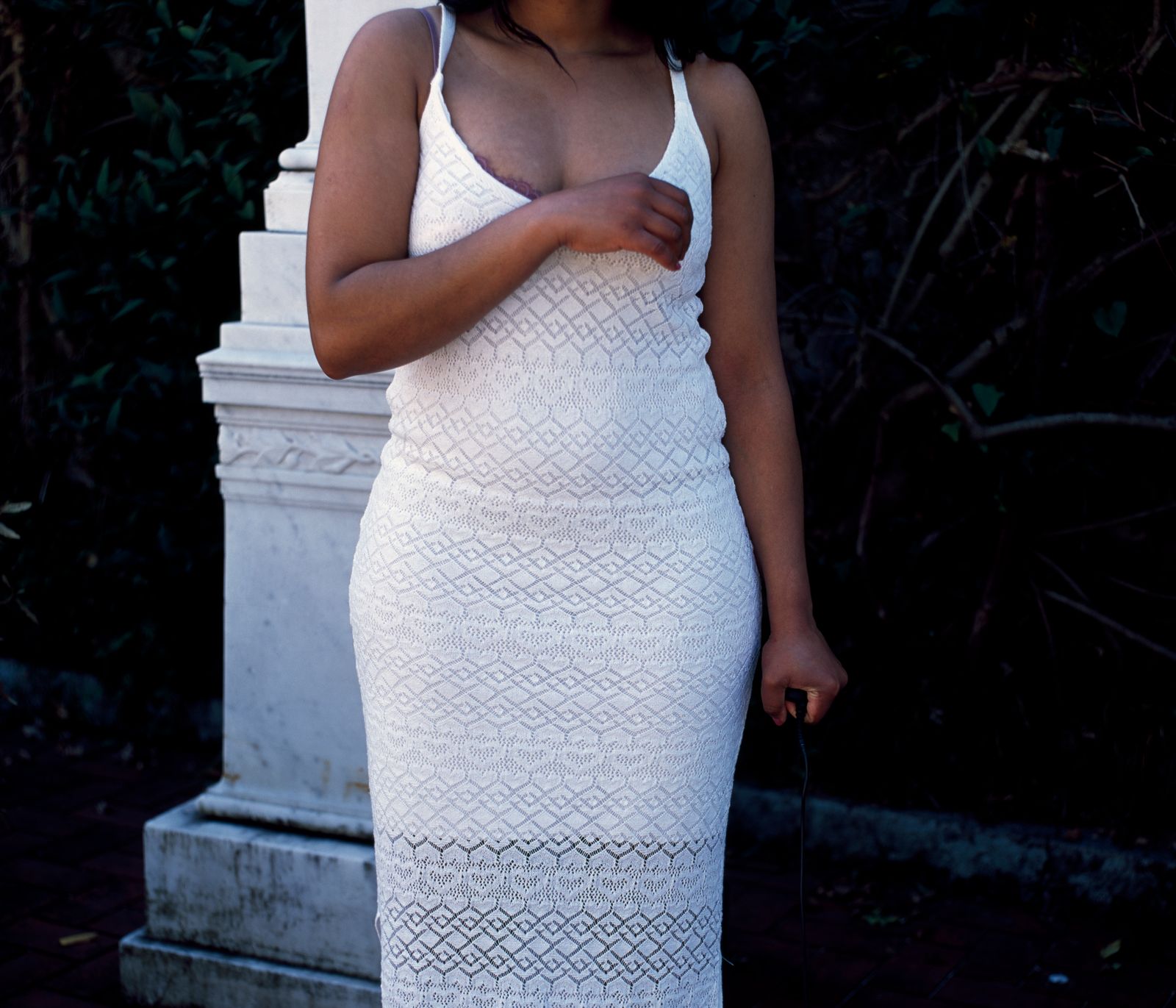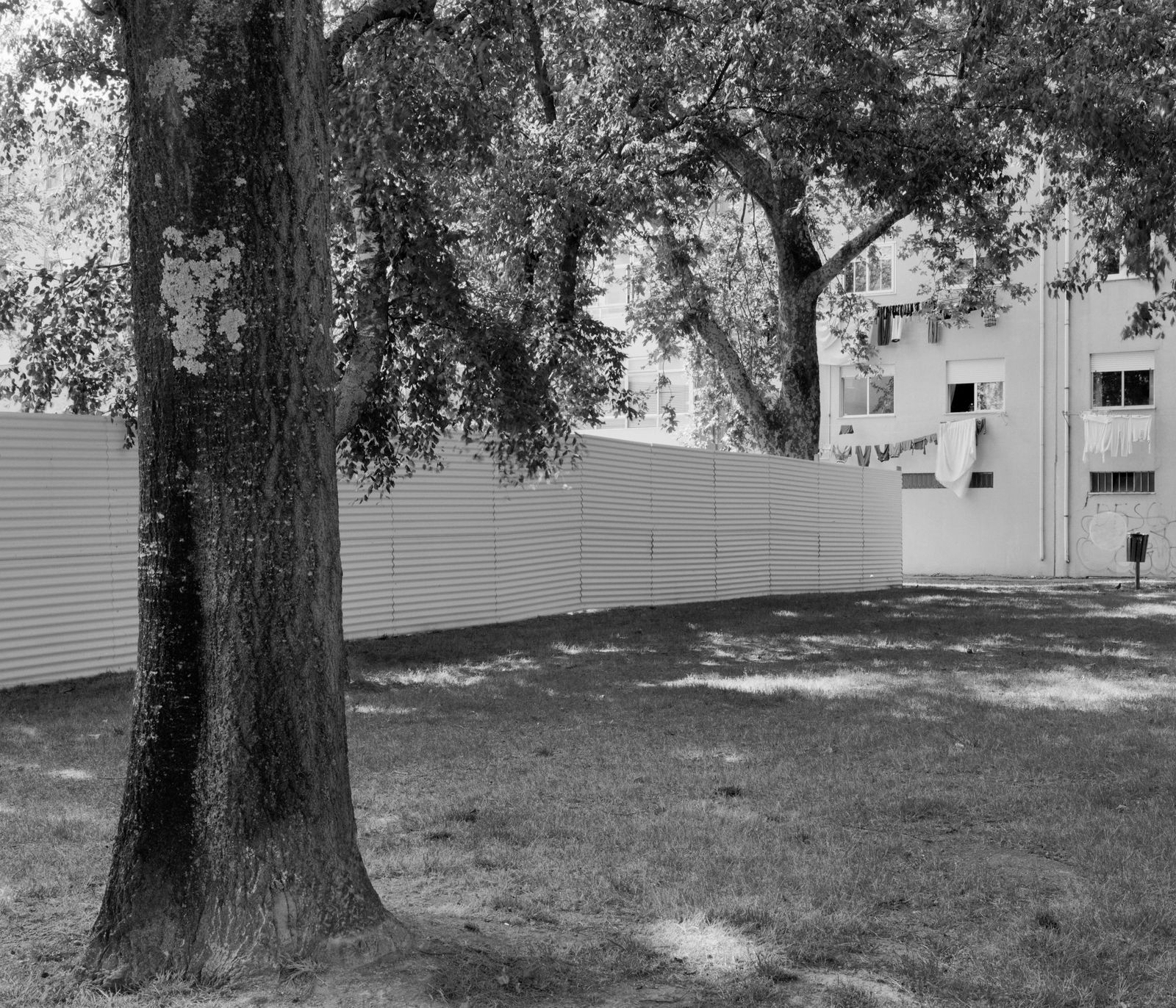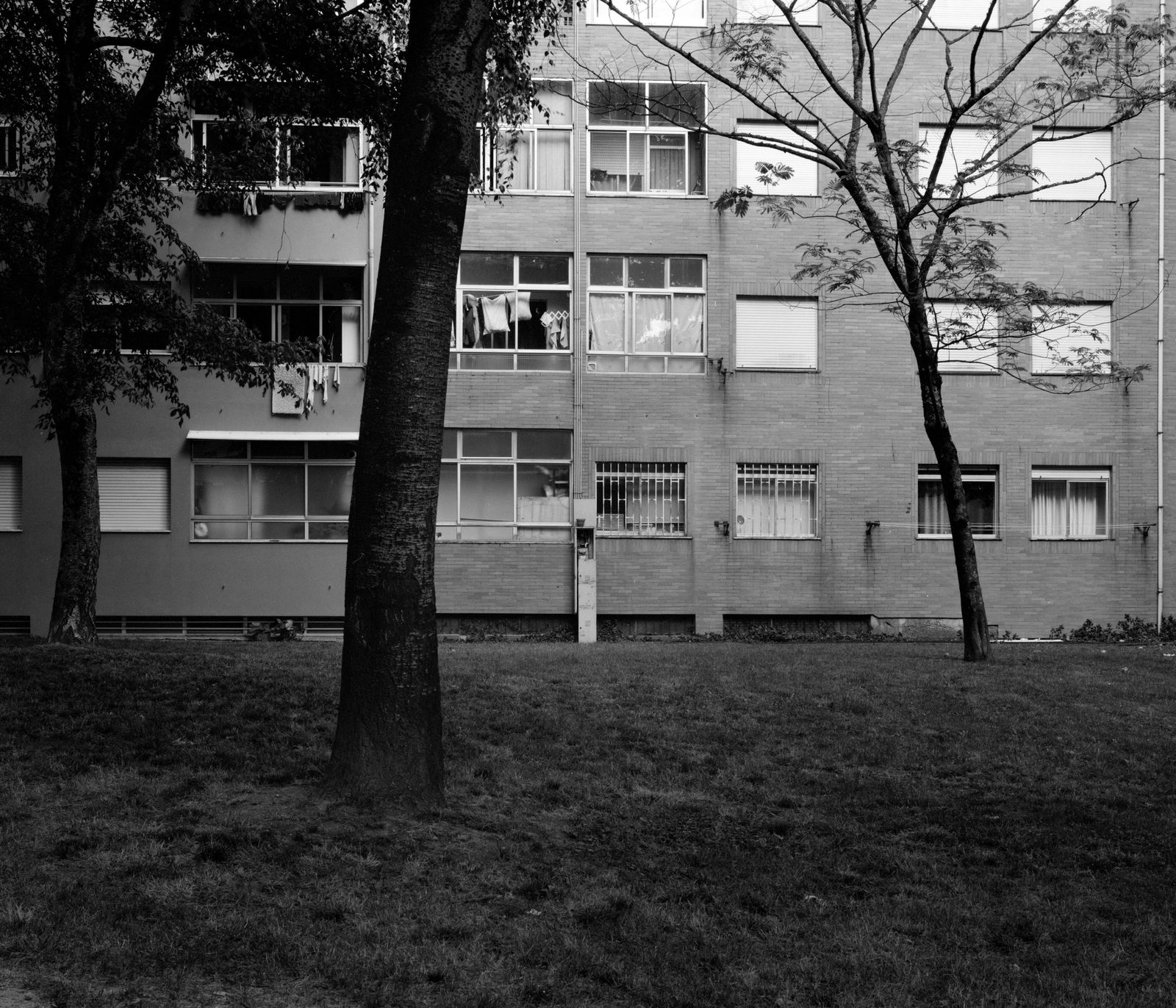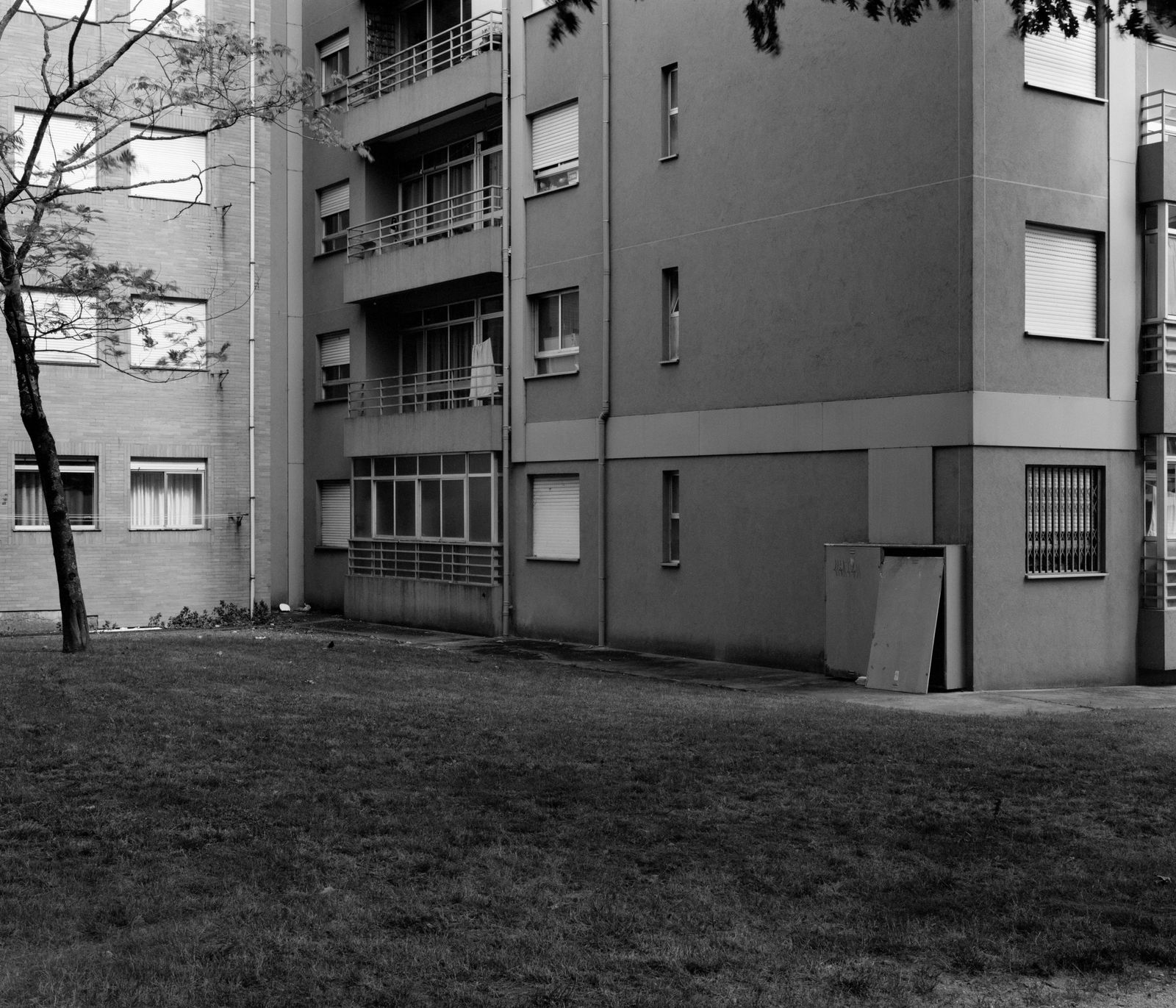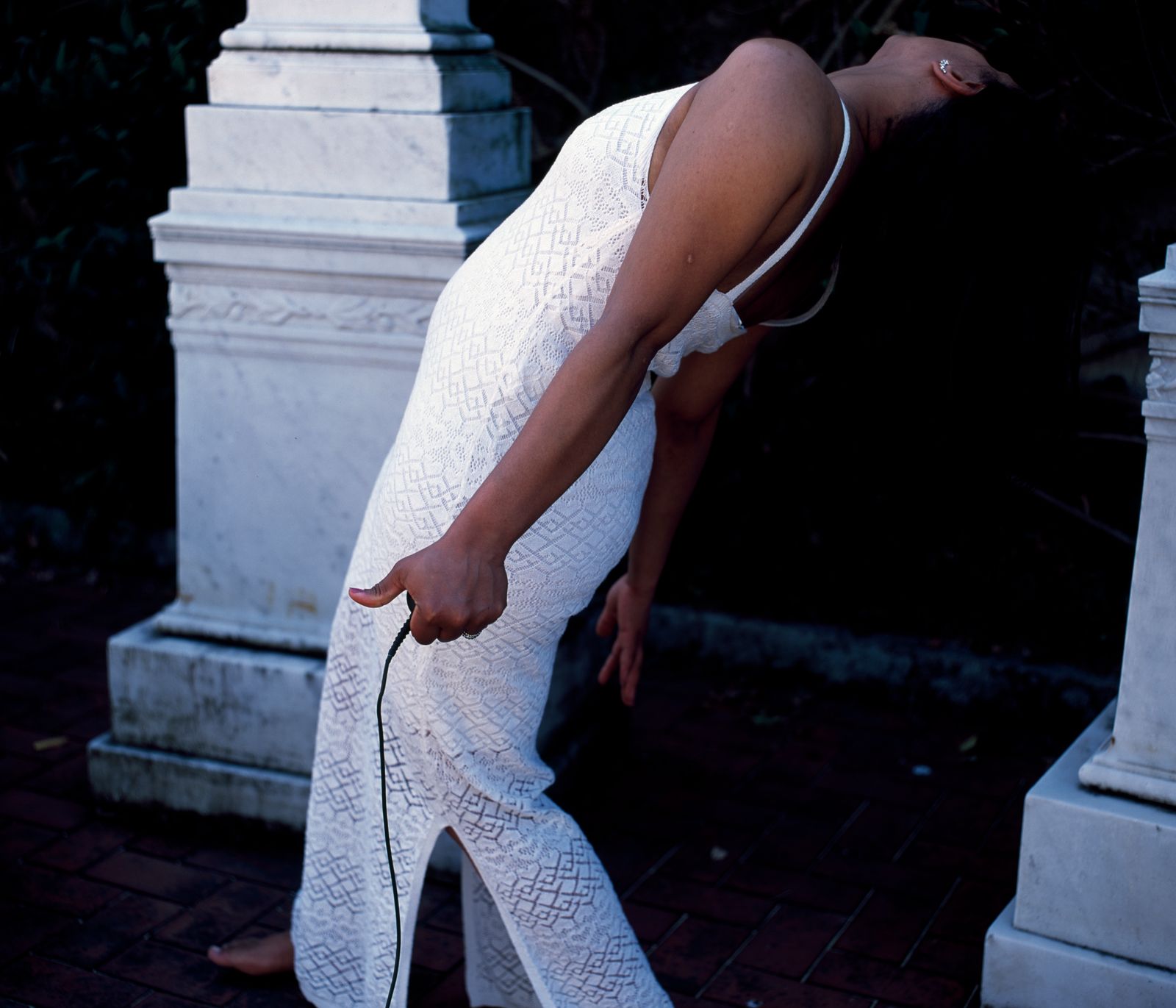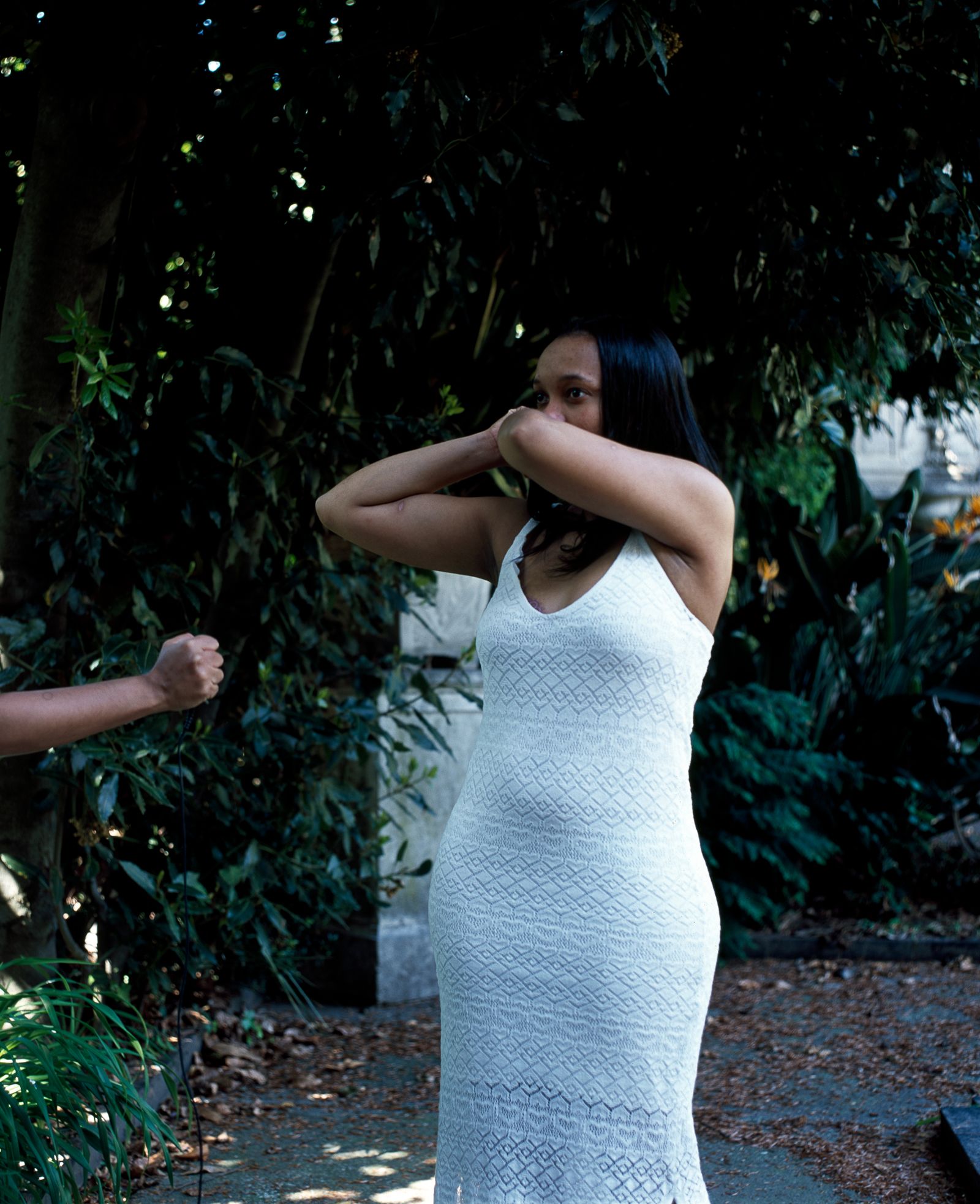Beyond solid ground
-
Dates2022 - 2022
-
Author
Marta Pinto Machado will not let herself die
Text by Djaimilia Pereira de Almeida
Lifeless buildings, in black and white, and a line of cypress trees. Will we be in the vicinity of a cemetery? We come from the land and to the land we return. But the ground is dynamic. Final abode, but also nest, also life. It is what the trees evoke, we are used to finding them next to the last address. Will they be lifeless houses, where you live like someone who dies? A neighborhood and windows instead of tombs? Instead of drying racks and washing clothes to dry in the wind, embroidery hanging from coffins? The houses in this series are full of life, but somewhere around, houses on the edge of the place where the city pulsates. The places where we live are full of them, we see them as soon as we move away from the heart, where no one lives anymore. Do you want Marta Pinto Machado to show that our neighborhoods look like cemeteries? What did she see on the side of the building and in the drawing of trees that shade the dead? Maybe he wants to show us, I think, as he sees the images gain color and two women emerge from the twilight, that there, where they left us to die, people live in color.
Side by side, the women dance and look at each other. The more colorful the costume, the more its vibration is tangent to the ground, as in the image of one of the girls, lying on the floor, too colorful to have died just now. The other woman, in a white dress, which reveals a scar on her chest, speaks with her arms, we can almost hear her, leans to one side and then to the other, inviting us to listen to her and dance.
What kind of scar will that be, on the breast, in a rosy hue, which incites our curiosity precisely because the white dress does not hide it — and Marta Pinto Machado chose to show it? The interview stain on the chest of the woman in white is the heart of the series, or to it we are led. The scar tells us: many things happened to me before this dance. You have to know nothing to one day know everything.
Maybe they live there, are friends, sisters. It wouldn't be surprising if they inhabited the suburban neighborhood shown to us in black and white. There is nothing fantastic about them, as there is not in this series. Perhaps its theme is the imposition of life over death, the refusal to perish, the vitality of our continuation, when everything around us asked us to do otherwise. The two women hold hands. An electric current vibrates between them. Nowhere will let them die.
Then I look again. There is no stain: it is the bra of the woman with the long hair that can be seen under her dress. The gaze betrayed me and invented a secret, or it was Marta Pinto Machado who invented it (for me). Marta Pinto Machado is an artist from whom secrets are expected. She looks at and gives to do with such indifference to the state of the art and to what has become the convention for a black artist of her generation, who maintains the courage and strength to just be herself. She says and reveals others without drawing attention to herself, but because she is interested in others, which shows up in the way she looks at them and captures them. She doesn't use anyone. It serves her vision and the joy of doing what she does. This is why it is practically a unique case among artists who deal today, in Portugal, with the spaces and stories that we see in this series. Marta Pinto Machado will not let herself die.
